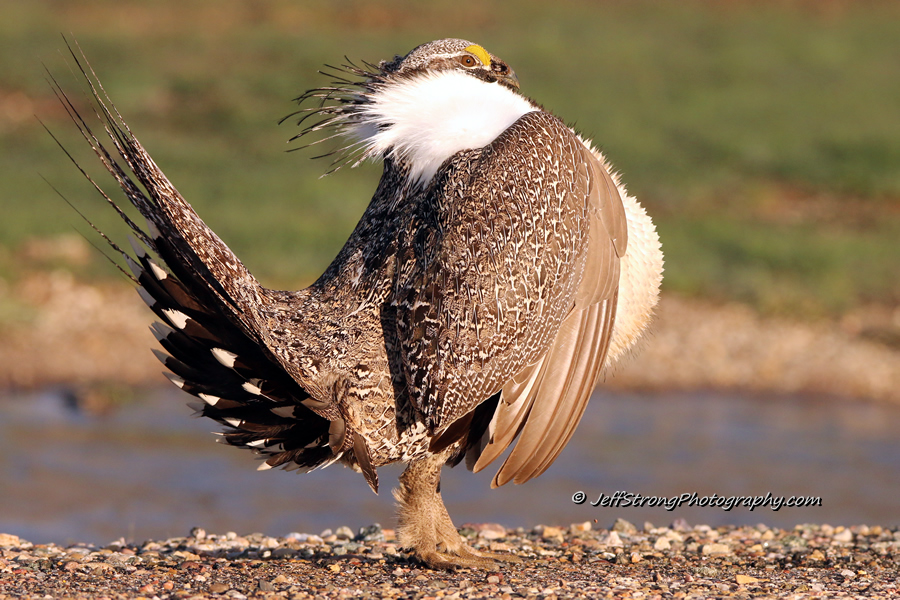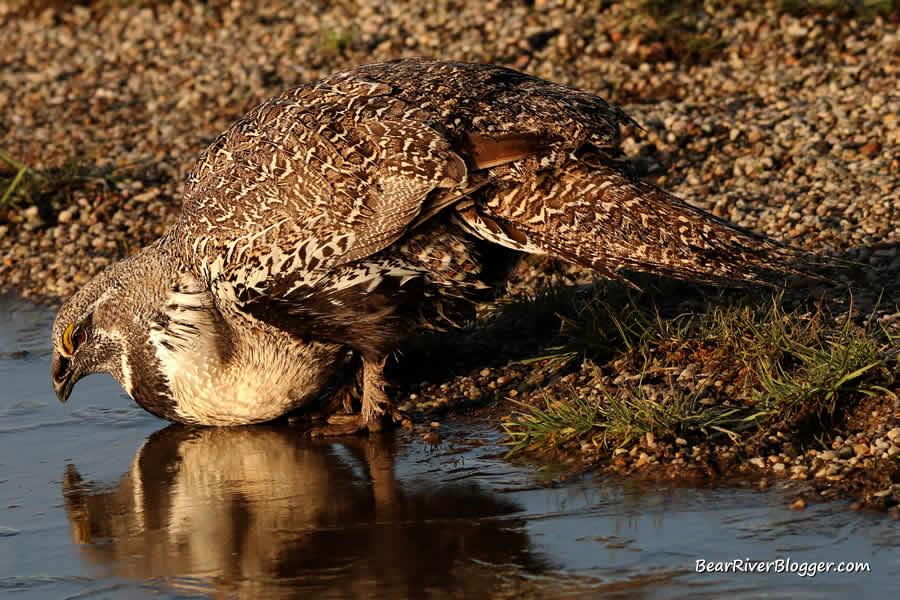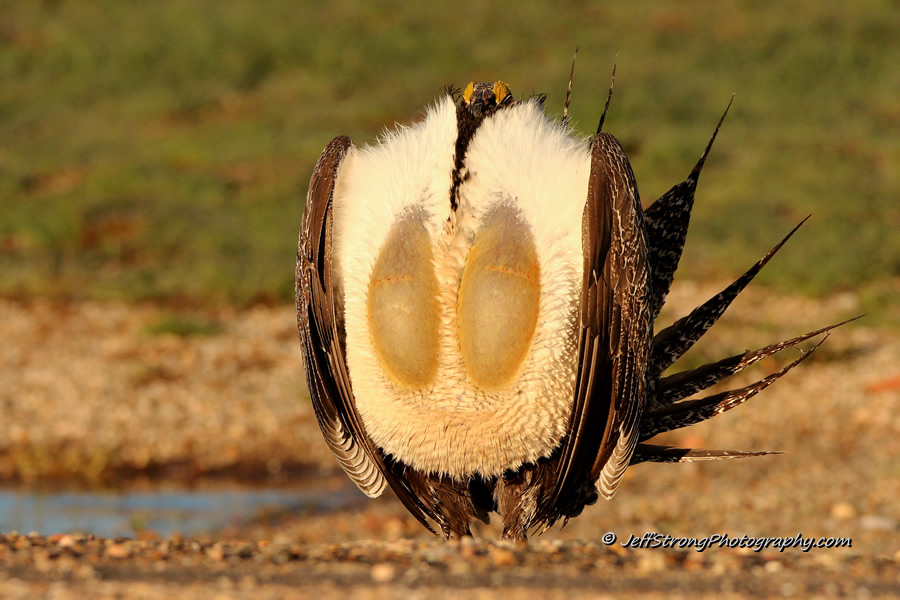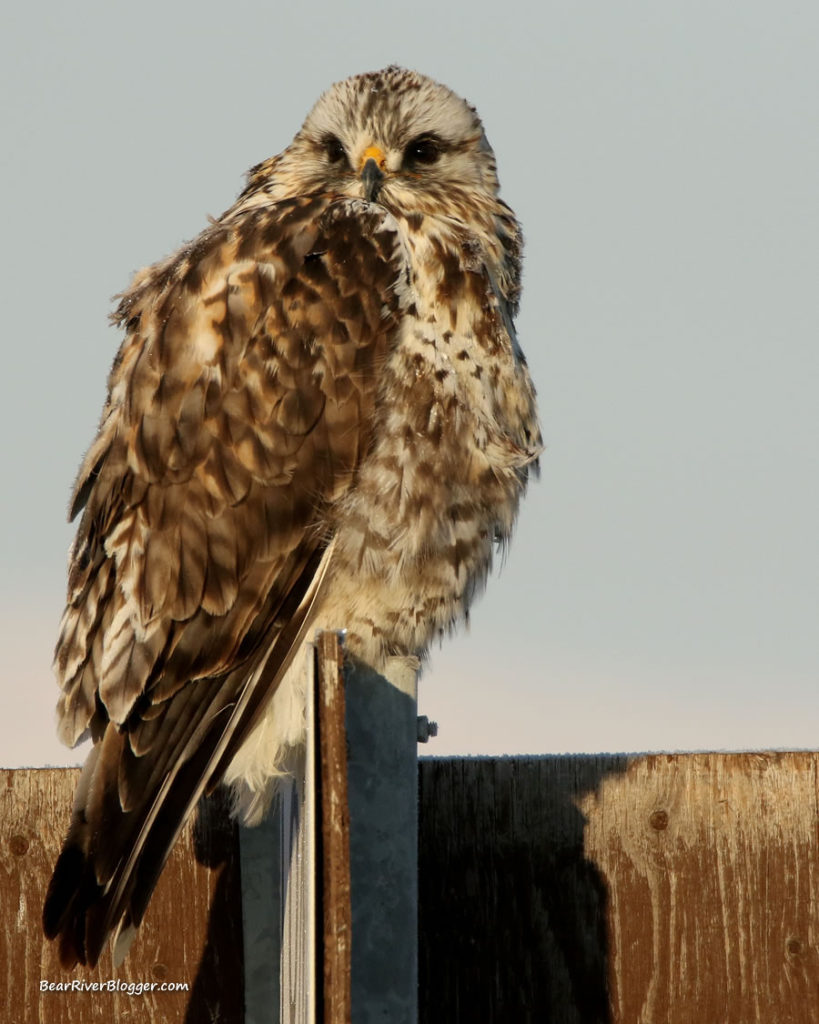When it comes to mating rituals, the male greater sage grouse certainly lays claim to one of the strangest, yet most intriguing courtship dances in the bird world. If you’ve never seen one of these large drab-colored birds “strut their stuff”, you are certainly missing out.
What they lack in fancy attire or enticing costume, the sage grouse surely makes up in originality and uniqueness for their peculiar but hauntingly beautiful choreography.
I have always admired the sage grouse, but until a couple years ago, I never had the opportunity to see their courting and mating ritual in action.
The sage grouse is a hard bird to find at times when it comes to bird watching. They live in dry, sagebrush habitats that are oftentimes quite large and not always easily accessible for us bird watchers.
They are often a solitary type of bird, making them even harder to find during parts of the year in these large, dry tracts of land.
But each spring, the sage grouse makes itself quite visible in traditional mating areas known as leks, and this is by far the best time and place to view and photograph the greater sage grouse.
Spring is the time of year when male sage grouse spends much of their time showing off to any and all females in hopes of gaining the opportunity to be a chosen suitor for the breeding season.
(Dance of the Greater Sage Grouse. For short nature photography tips and interesting stories about the natural world around us, subscribe to our Bear River Blogger channel on YouTube for videos and updates from our travels while out in nature, both on and off of the famed Bear River Migratory Bird Refuge.)
It’s quite a beautiful and unique display, to say the least. I didn’t get out last spring to view and photograph the greater sage grouse, but this year it is high on my list of priorities again, hoping to capture some more photographs and video of the greater-sage grouse mating dance in action.
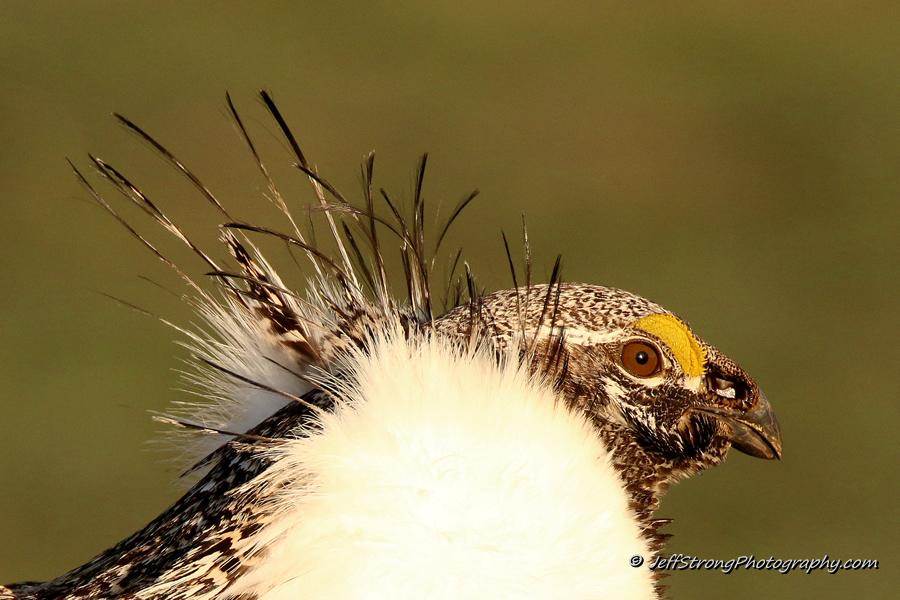
Here in Utah, there are various places where the greater sage grouse does indeed live, but one place, in particular, namely the Henefer lek, is by far the easiest and closest location to view the dancing sage grouse.
I’ll go into more detail in a minute about where and when people can find and view the sage grouse during their spring mating ritual.
Sage Grouse Habitat
The greater sage grouse lives in the western United States, solely in sagebrush habitats found in Utah, Wyoming, Colorado, Montana, Idaho, Nevada, Oregon, California, and Washington. Some of these states, however, have only limited sage grouse habitat and, of course, limited corresponding populations.
Sagebrush habitats are crucial to sage grouse populations, and the greater sage grouse can be found in sagebrush habitat areas such as plains, foothills, and mountain slopes where large tracts of sagebrush plants exist.
Unlike other species of grouse, the greater sage grouse has a weak gizzard and thus cannot digest hard seeds or grains. As a result, the sage grouse diet primarily consists of leaves and buds of sagebrush, as well as a variety of insects during the summer months.

Sage grouse can and do eat leaves from other plants when available, but there isn’t a great variety of plants in typical sagebrush habitats, so the sagebrush plant itself is a vast majority of the sage grouse’s overall diet.
In one area near the Utah, Wyoming border, I have personally seen sage grouse fly from sagebrush areas into neighboring alfalfa fields, giving rise to the possibility of them either eating the lush, green hay leaves, searching for insects, or both.
Many sagebrush habitats are in areas with little or no agricultural water resources, so this was a very unique situation, I will admit.
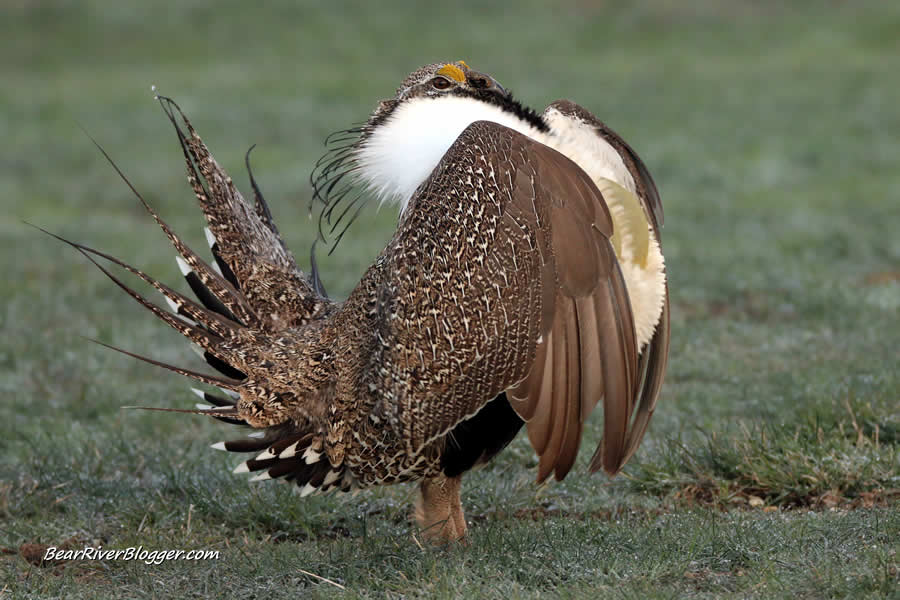
Water can also be hard to find at times in sagebrush habitats, but sage grouse can metabolize water from succulent leaves of the sagebrush, allowing them much-needed moisture in times of drought.
This is why sagebrush habitats are so vital and why healthy sagebrush plants are critical for sage grouse survival. Sage grouse depends on it for both food and even water, at times.
I have seen statistics depicting numbers as high as 90% of the sage grouse’s winter diet is sagebrush leaves and buds, and 60% of its total yearly diet is also from the sagebrush plant.
It basically comes down to no sagebrush means no sage grouse.
Leks
Each spring, when the urge to propagate another generation begins to rise, both the male and female greater sage grouse travel to a familiar and traditional piece of ground called a lek.
A sage grouse lek is a section of ground used by a local grouse population, year after year, for their courting and mating rituals. Male sage grouse come to dance and perform for the females, hoping to win the opportunity to breed with any and all potential female sage grouse in the area.

The breeding success of the greater sage grouse highly depends upon these areas known as leks. Sage grouse leks are how and where male and female sage grouse find each other every spring for courting and breeding purposes.
Leks are specific areas used year after year by a population of sage grouse solely for courting and breeding. Along with a healthy amount of good sagebrush on large tracks of land, leks are vital to the success of the greater sage grouse.
To the casual observer, it might just seem like an ordinary piece of ground, but to the sage grouse, leks provide a location known by other sage grouse where they can come together for this very important time of year.
I have read sage grouse leks usually have less dense and shorter vegetation, making it easier for sage grouse to find each other and view the male’s courtship dance.
If you have ever been to sagebrush habitat, they can be quite large and thickly dispersed with sagebrush, not giving many areas for sage grouse to find and court one another, and this is why leks are so important during the breeding season.
Breeding and courting efforts, as well as just sage grouse finding one another during the breeding season in the vast sea of a sagebrush plain or hillside, for example, would be greatly hampered without leks.
It is not readily known how this information is passed down from generation to generation about specific sage grouse lek sites as sage grouse are often solitary birds, but somehow each generation is in-tune with where to find a lek for courting and breeding purposes.
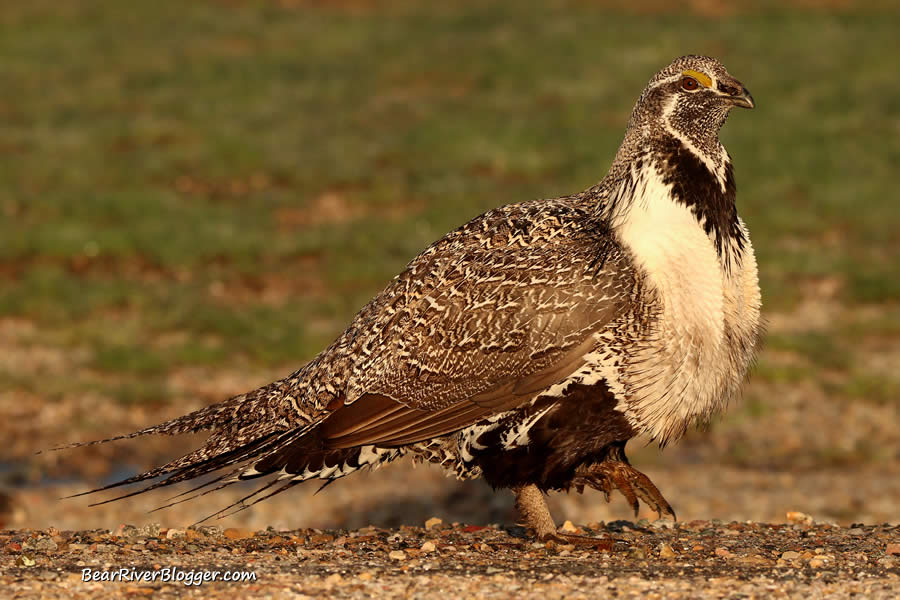
Sage grouse can fly but they aren’t built for long distances or high altitudes. They are a ground-based bird that flies short distances when needed, often when trying to escape a predator, for example, due to their short legs and inability to run very well.
The sage grouse is a bird that is preyed upon by other animals, including eagles, falcons, hawks, as well as coyotes, and foxes. When they feel threatened, sage grouse will often lay low, hiding under sagebrush or just laying flat on the ground completely motionless.
I actually observed this interesting behavior a couple years ago at the Henefer lek when a bald eagle flew over during their mating ritual.
I had no idea there was a bald eagle overhead until all at once, every bird stopped their mating activities, became suddenly quiet, and laid flat and motionless until the eagle had passed by.
A few minutes after the bald eagle had left the area, the sage grouse mating dances and courting started up again.
During this mating ritual, the male sage grouse makes a popping sound as it dances and struts around, filling and releasing air from sacks on its chest. This is all part of the unique and mesmerizing mating dance performed each spring on these leks.
Viewing The Greater Sage Grouse – Henefer Lek
The best location in Northern Utah to view and photograph the greater sage grouse is on the Henefer lek, located a couple miles east of East Canyon State Park on state road 65, right on the Morgan-Summit county line.
The best time of year to view mating sage grouse in Utah is late March to early May, with April usually being the peak time for sage grouse viewing.
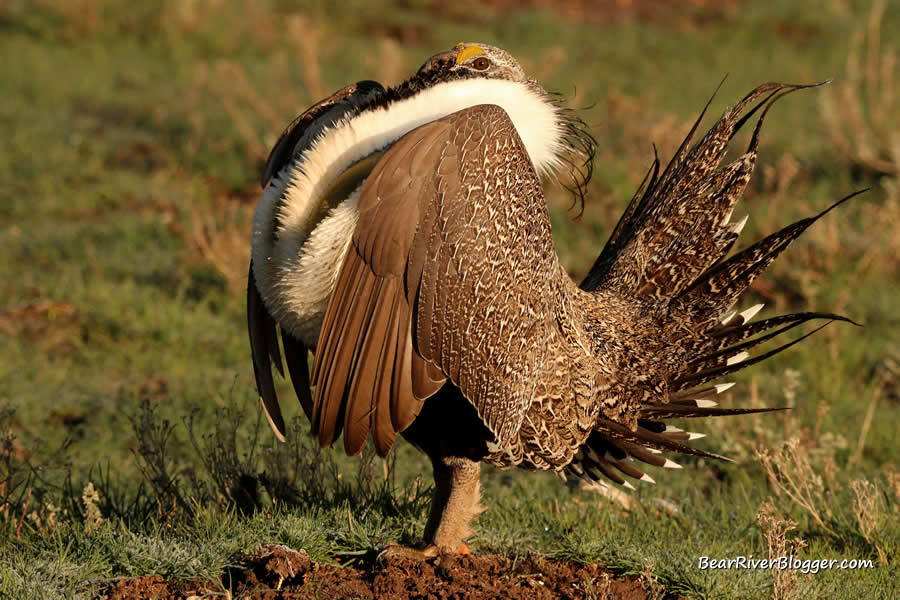
The greater sage grouse perform their mating dance early in the mornings, so the best time to view sage grouse is right at sunrise. As the morning progresses, their courtship dancing diminishes for the day, only to return once again very early the next morning just as it starts to get light out.
One thing to remember with the Henefer sage grouse lek is the grounds are on private property so no public access is available. All viewing is done from the roadside, but the sage grouse are commonly displaying near the road so viewing is usually pretty good if people stay in their vehicles and quietly observe the grouse as such.
Getting out of your car or driving closer to the sage grouse will cause the birds to fly much further away into the sagebrush field, ruining the experience for all who come to view the grouse.
The best way to observe the grouse is to arrive very early, usually before it starts to get light out. Park the vehicle and quietly wait for the popping sounds of the male sage grouse dancing to start, and then stay inside your vehicle and watch without disturbing them.
By doing this, I have had sage grouse within just a few yards from my vehicle at times.
They move around a lot during their courting, so if you are not in the best viewing position, often the grouse will move around to a much better location, so staying put is the best advice, besides arriving before it starts to get light out, to get a closer view of the sage grouse.
I hope I’ve portrayed the sage grouse in a manner that causes other bird watchers to take a great interest in this most unique species of grouse.
It is a bird not commonly seen by many birders, so I hope I have instilled some interest by others who love birds as much as I do to get out and observe the mating ritual of the greater-sage grouse during spring on a lek.
It means an early morning trip to get there well before the dancing starts, but for me, at least, it is a sacrifice well worth the needed effort to view these most interesting birds doing their most unusual but strikingly beautiful mating dance.
Feel free to share this post with other birders you might know that would be interested in the greater sage grouse. Don’t forget to subscribe to our website for email updates anytime I make a new post or have an interesting bit of nature-related information to share.
Images Of The Greater Sage Grouse
